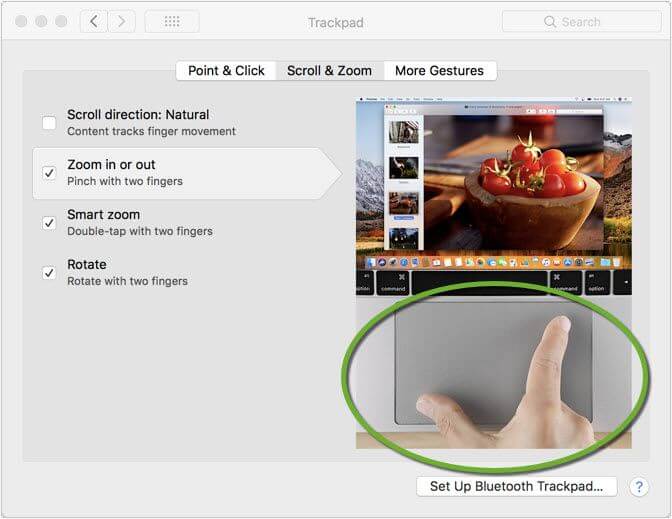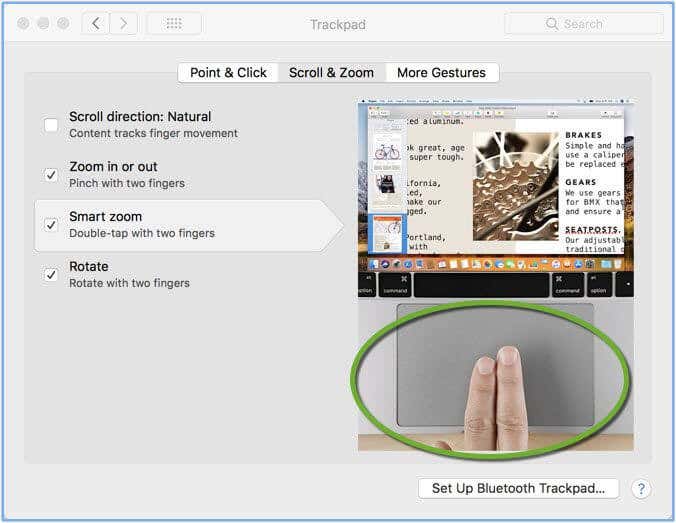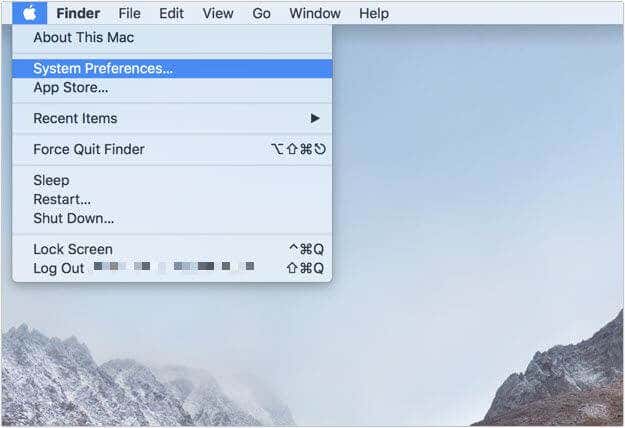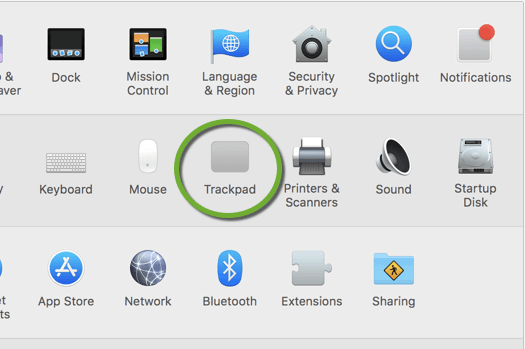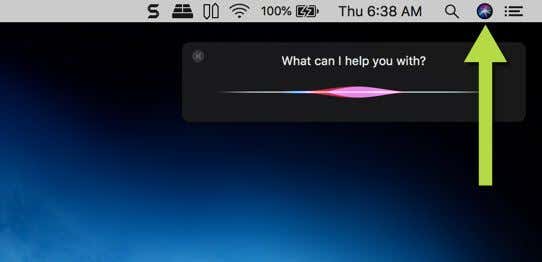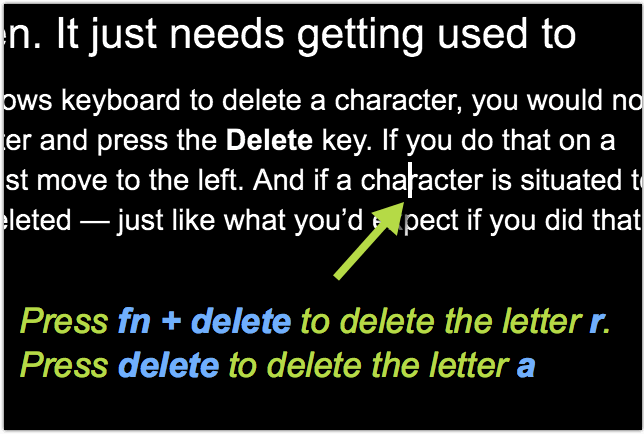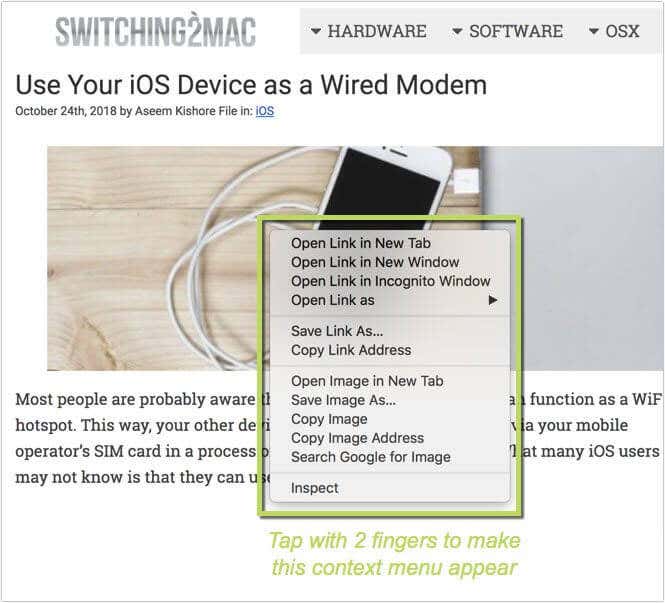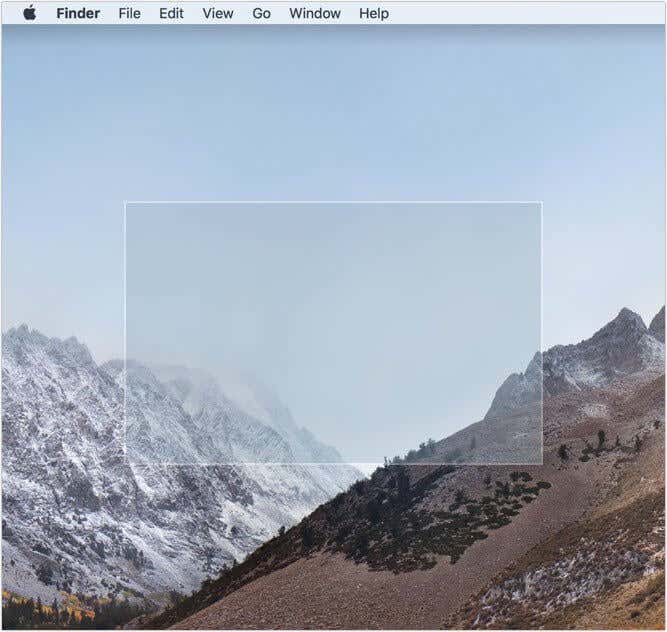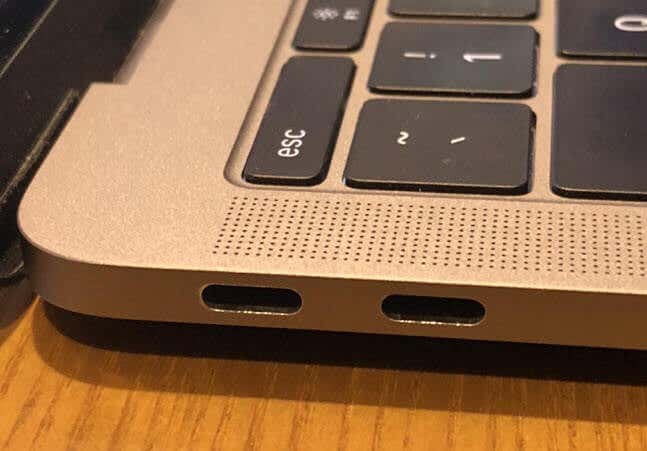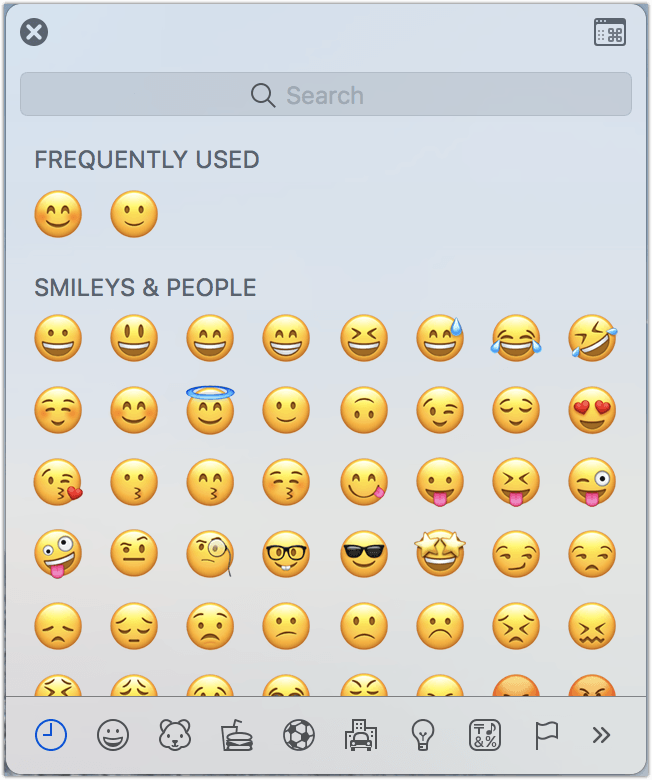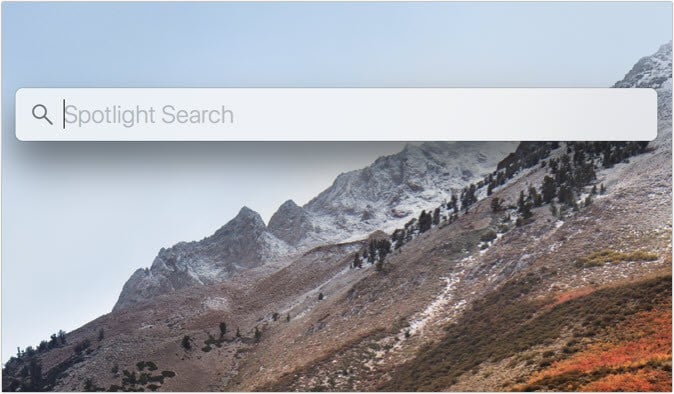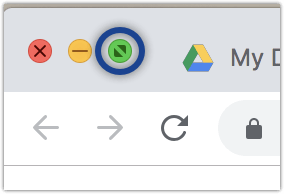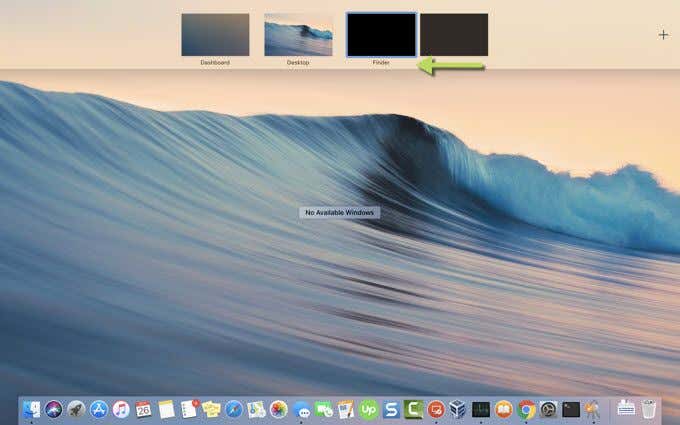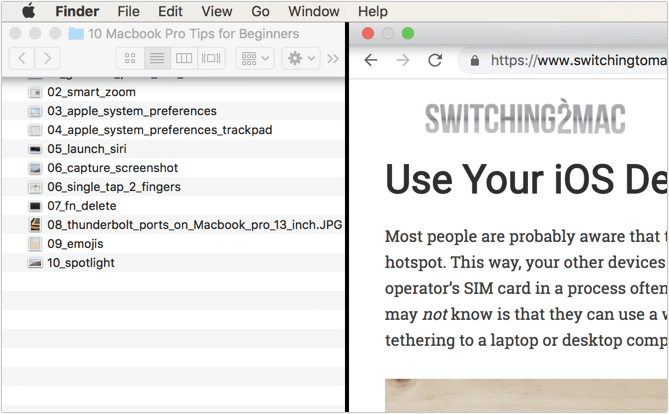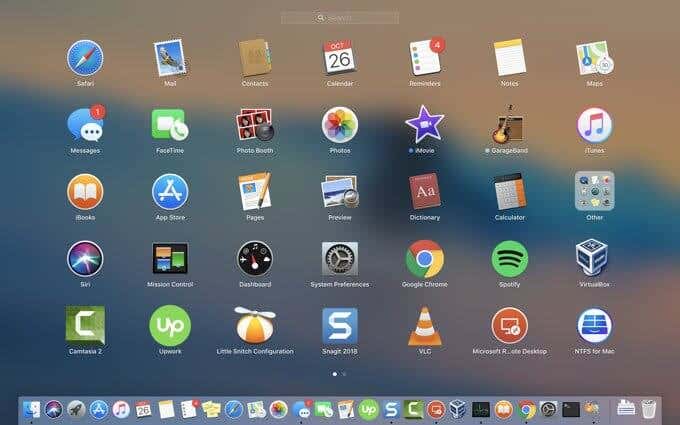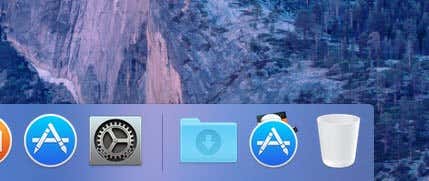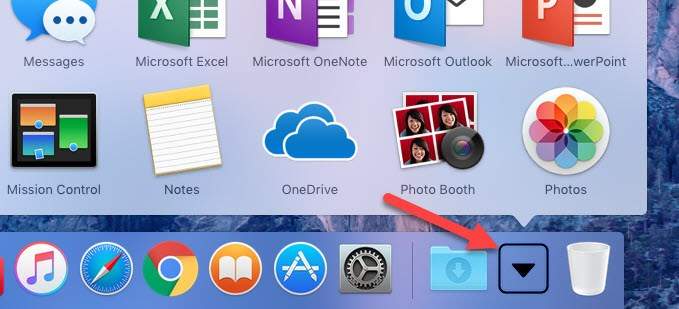Work faster with multi touch, split screens and more
The Macbook Pro is a very powerful laptop; one that can increase your productivity many times over. But it can also be a bit complicated, especially if you’re used to working in a Windows environment. In this article, we’ve put together 10 useful tips that will accelerate your familiarity with this sleek, state-of-the-art block of aluminum.
Note: We’re currently using a 2018 model running macOS High Sierra for this article, so there might be some features that aren’t accessible to you if you’re using an older MBP model or an older version of macOS.
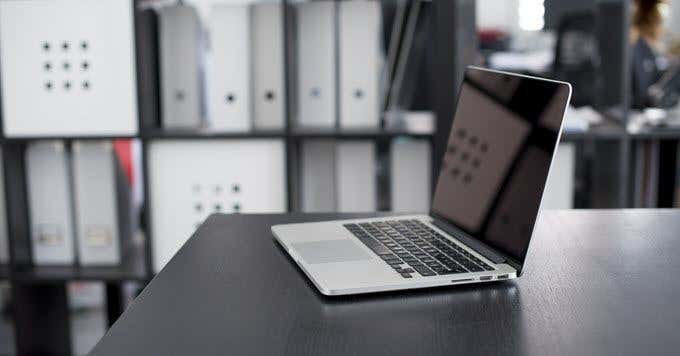
Also, we did a video on our YouTube channel covering some of the main points below. Be sure to check it out.
1. Work Faster with Multi-Touch Gestures
The first thing you’ll want to be familiar with is that massive, smooth-to-the-touch trackpad. There’s a reason why the MacBook Pro trackpad is so large and why it feels so different from other laptop trackpads.
It can actually support multi-touch gestures, much like your smartphone or tablet. Yes, there are now several Windows 10 laptops that can do that as well, but MacBook Pros have supported multi-touch for many more years and the implementation is simply better.
Let’s put multi-touch into action right now. Using the trackpad, hover your mouse pointer over any non-clickable object on this article (try whitespace). Now, bring your thumb and index finger close together (while touching the pad) and then expand just like you would to zoom in on an image on your smartphone.
Notice how everything expands like your zooming in (because you are). Bring everything back to its original size by doing a pinching gesture.
You can also have almost the same effect by simultaneously double-tapping non-clickable space on the page using two fingers. That should zoom in on the page. Zoom out by double-tapping again using two fingers.
You can learn (as well as configure) more touchpad gestures by navigating to the Apple menu > System Preferences.
Then click on Trackpad.
You should then see Point & Click, Scroll & Zoom, and More Gestures tabs across the top.
2. Let Siri Do Some Tasks For You
Even if you’re new to the Apple ecosystem, you’ve probably already heard about Siri, the virtual assistant that replies to questions and even performs some tasks for you. Siri debuted on the iPhone but has now found its way to the iPad and other Apple devices, including the Mac.
You can access Siri by clicking its icon on the upper right-hand corner of your screen.
Once launched, Siri can start responding to questions/requests, like:
- Show my Downloads folder
- Make the screen brighter
- How fast is my Mac?
- FaceTime Bob
- What is the weather tomorrow?
- And so on
Siri uses artificial intelligence (AI) that enables it to learn more as you keep on using it. Once you get the hang of it, it can really help you get more things done.
3. The Delete Key Isn’t Broken
On a Windows keyboard, when you want to use the Delete key to delete a character, you would normally place the cursor to the left of that character and press the Delete key. Strangely, if you did that on a MacBook Pro keyboard, the cursor will just move to the left.
Worse, if a character is situated to the left of the cursor, that character will be deleted — just like what you’d expect if you did that with a Windows Backspace key.
Sounds counterintuitive, right? Well, if you’re used to Windows then it certainly is. To achieve the same effect as a Windows Delete key, just press fn + Delete. Once you get used to that, it won’t be so counterintuitive anymore.
4. Right Click = Single-Tap with 2 Fingers
Right-click functionality is one of the most useful features on Windows, enabling you to launch context menus that display the choices you need at a given time — or context. Unfortunately, that functionality isn’t available by default on your MacBook Pro. Nothing happens if you try to right-tap on the trackpad.
But don’t worry. The Mac-equivalent of the right-click is equally easy. Remember that two-finger double-tap we taught you earlier? Well, if you reduce that to a single-tap, you can get the same effect as a right-click. Try it out. Single-tap with two fingers while the cursor is hovering over this article. You should instantly see a context menu popping out as soon as you perform the gesture.
5. Capturing Screenshots
Sometimes, you might want to capture screenshots to use in a document or presentation. To capture screenshots on your Mac, you can do any of the following:
- To capture the entire screen, press command + shift + 3
- To capture a portion of the screen, press command + shift + 4, and then, once a crosshair appears, tap and drag that crosshair over the area you want to capture. Once you’ve covered the area you want captured, release. Easy as pie.
Normally, your images will be stored on your desktop. However, if you have a screen-capturing tool like Snagit, the images will usually be pasted there. Check out my more detailed post on more keyboard shortcuts in OS X.
6. Plug in More Devices using Thunderbolt
So far, we’ve been focusing on stuff you see on the screen. Let’s move someplace else on your MacBook Pro’s unibody. Look at the side, particularly that peculiarly-shaped power jack. Apple didn’t shape that jack to simply look like the Thunderbolt port beside it. IT IS a Thunderbolt port. Both ports are exactly the same.
So, you can actually charge your laptop through either of those ports and you can plug in any compatible device (e.g. an external drive, an external monitor, an external microphone, etc) into either one.
Having a Thunderbolt port as a power jack can come in handy, especially if you’re using the smaller 13-inch MacBook Pro, which only comes with 2 Thunderbolt ports. For example, let’s say you want to record audio through an external mic AND still have an external monitor for viewing — say your script — while ALSO using the main screen to display an application.
To do this on a 13-inch MacBook Pro, you can temporarily detach your power cord, plug one of the devices in its stead and then plug the other device in the other port. MacBook Pros have extensive battery life, so you can accomplish a lot of work even with the MBP unplugged.
7. Bring on the Emojis!
If you’re a Millennial or a Gen Z or just about anyone who just loves to express through smileys, frownies, and the like, you’ll be glad to know that your MacBook Pro’s got a hotkey for launching Apple’s extensive collection of emojis. Just press Control + Command + Space. That should bring this up:
Most applications allow you to simply tap an emoji to use it. For others, you might have to drag the emoji into place.
8. Search Fast with Spotlight
Normally, when we want to search for something on the Web, we launch our favorite web browser and then type our search into the search bar. Then if we want to search for a file (in Windows), we open Explorer or go to the Start menu and search there.
macOS puts all search functionality into one place. You can do all searches in Spotlight. To launch Spotlight, just press Command + Space. That should launch the Spotlight search bar, where you can then enter whatever you want to search, be it a file on your file system or something on the Web.
If you can’t find the file you’re looking for but are 100% sure it’s in your system, you probably just need to re-index your drive. But that’s for another post, so stay tuned for that.
9. Work More Efficiently with Split Screens
Power users usually have 2 or more external monitors to work more efficiently. With 2 or more screens, you can easily:
- Compare documents,
- Use one screen as your main work space and another for displaying references,
- Use one screen for editing and another for displaying outputs,
- And so on.
But what if you don’t have any external monitor? Well, you can always split a screen into two. To achieve this, you first need to set the two apps you want to put alongside one another into Full-Screen mode. Just tap on that green circle on the upper-left corner of each app.
Once the two apps are in full-screen mode, press the F3 button to enter Mission Control mode as shown below. As soon as you’re in Mission Control, position the two apps/desktops beside each other. If you don’t see any apps/desktops at the top row, hover your mouse pointer in that area.
Once the two apps are beside each other drag the app on the right to the left until it overlaps the one on the left. Release.
Once they’ve snapped together, tap on the desktop that encloses the two apps. You should then see your two apps in split-screen mode just like the one shown below.
10. Where Can I Find All My Apps?
Talking about apps, let’s end this article by showing you where you can find the apps in your MacBook Pro. The long way is to launch the Finder and go to Applications.
But if you want a faster way, just click on the grey icon with the rocket in the dock. That should bring up Launch Pad. Scroll sideways by swiping two fingers horizontally on your trackpad and tap an icon to select an app.
You can also assign a keyboard shortcut to LaunchPad by going to System Preferences – Keyboard – Shortcuts – LaunchPad & Dock. Another good option to access your apps quickly is to go to Finder and drag the entire Applications folder to your dock.
When you click on that icon now, it will load up all your apps directly from the dock.
That’s it for this article. Hope you enjoyed it! We’ll be writing more in-depth guides on how to get more of your Mac soon.

